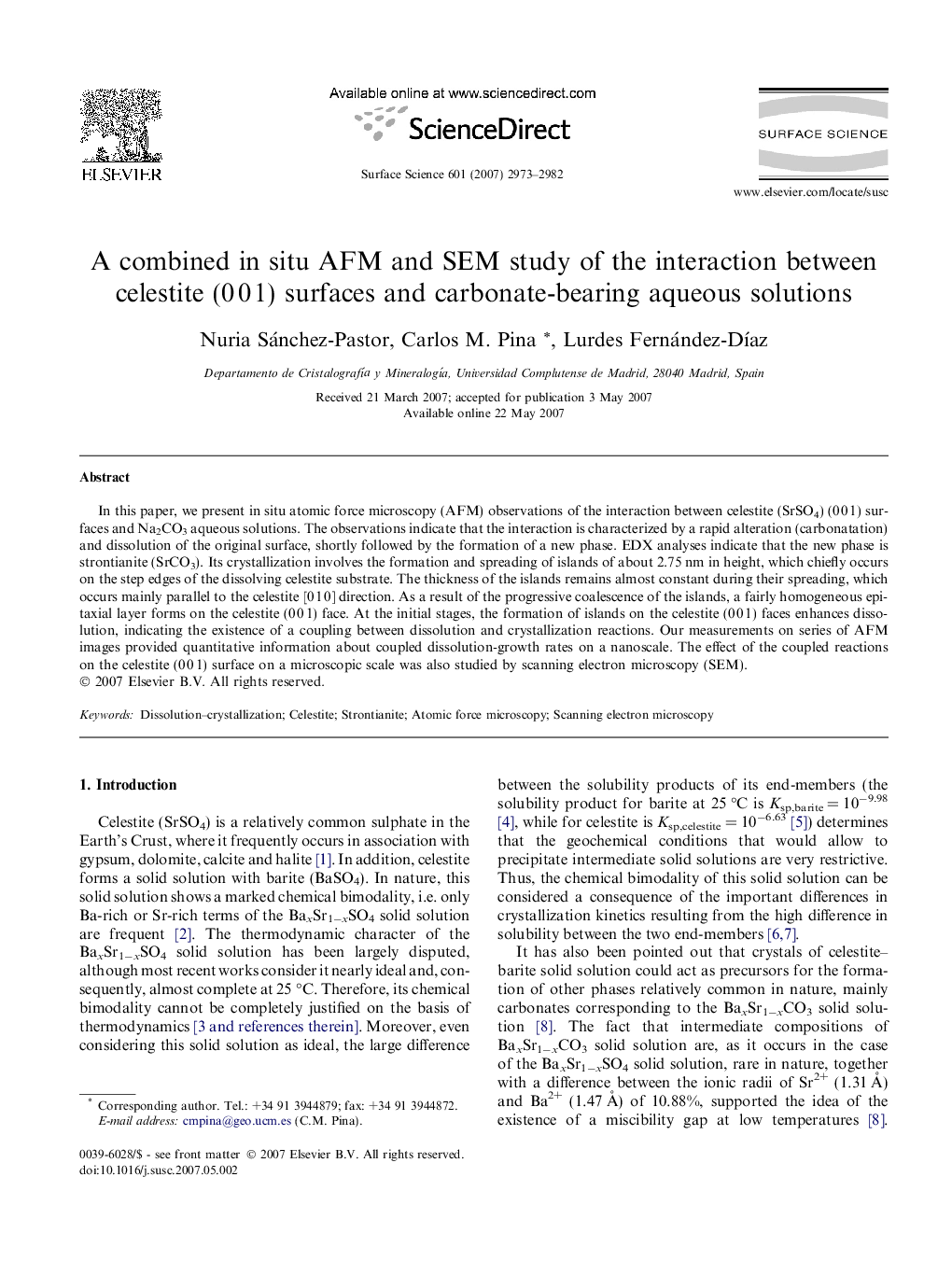| Article ID | Journal | Published Year | Pages | File Type |
|---|---|---|---|---|
| 5426625 | Surface Science | 2007 | 10 Pages |
In this paper, we present in situ atomic force microscopy (AFM) observations of the interaction between celestite (SrSO4) (0Â 0Â 1) surfaces and Na2CO3 aqueous solutions. The observations indicate that the interaction is characterized by a rapid alteration (carbonatation) and dissolution of the original surface, shortly followed by the formation of a new phase. EDX analyses indicate that the new phase is strontianite (SrCO3). Its crystallization involves the formation and spreading of islands of about 2.75Â nm in height, which chiefly occurs on the step edges of the dissolving celestite substrate. The thickness of the islands remains almost constant during their spreading, which occurs mainly parallel to the celestite [0Â 1Â 0] direction. As a result of the progressive coalescence of the islands, a fairly homogeneous epitaxial layer forms on the celestite (0Â 0Â 1) face. At the initial stages, the formation of islands on the celestite (0Â 0Â 1) faces enhances dissolution, indicating the existence of a coupling between dissolution and crystallization reactions. Our measurements on series of AFM images provided quantitative information about coupled dissolution-growth rates on a nanoscale. The effect of the coupled reactions on the celestite (0Â 0Â 1) surface on a microscopic scale was also studied by scanning electron microscopy (SEM).
